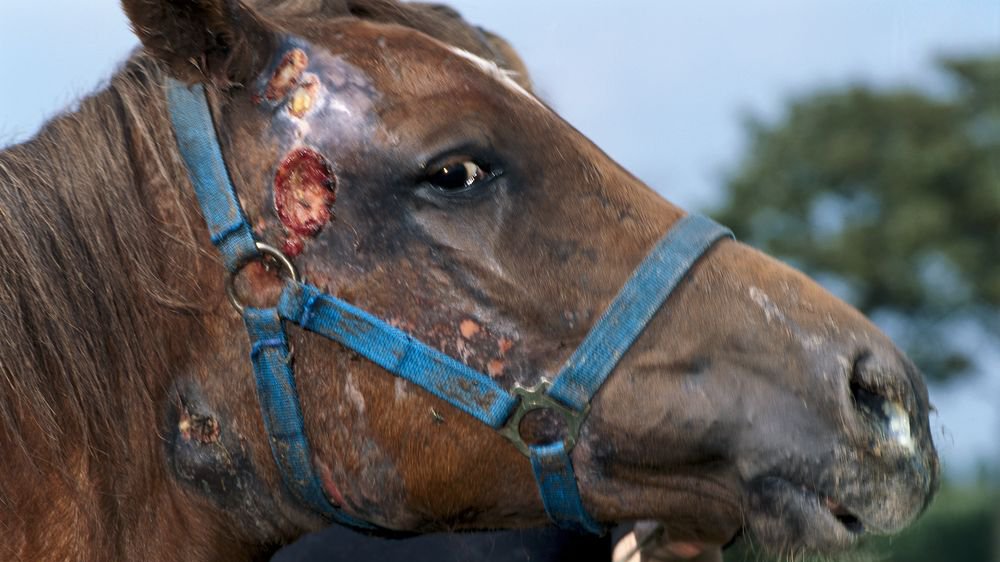Equine Influenza:
Syn: Equine distemper, Pink eye, Catarrhal fever
- It is acute, febrile highly contagious disease of horse
- It is characterized by general septicemia, respiratory problem accompanied by severe persistent dry cough.
- Horse, mule and donkey are susceptible. Horses of age 2-6 months are most susceptible.

Etiology:
- It is caused by two distinct sub-types of Influenza A virus within genus influenza A of family Orthomyxoviridae
- 2 sub-types; A1(H7N7), A2 (H3N8)
- H7N7 is thought to be extinct, and the current H3N8 has spread widely throughout the world.
- They are related to but distinct from the viruses that cause human and avian influenza.
Epidemiology:
- Outbreaks in susceptible horse populations are associated with considerable economic impacts. China, Japan, and Australia experienced devastating epidemics of equine influenza affecting tens of thousands of horses in 2007.
- Equine influenza (Orthomyxovirus) A/equine type-2 H3N8 was first recognized in 1963 and has subsequently become endemic in many countries.
- New Zealand and Iceland are currently free of equine influenza.
- Antigenic divergence of equine influenza virus (EIV) over time has resulted in the emergence of distinct lineages (European and American).
- Since 2010, the Florida H3N8 clades 1 and 2 sublineage strains (from American lineage) have predominated in EIV outbreaks worldwide.
- A carrier state is not recognized for equine influenza.
- From july 2022-September 2024, sporadic outbreaks have been reported in Belgium, UK, France, Germany, Ireland, Netherland and Sweden.
Transmission:
- It is transmitted through droplet infection.
- Indirect transmission via fomites (clothing, hands, shared water) should also be considered an important mechanism of disease transmission.
- Shedding is longest in naive horses and lasts ~7–10 days after the time of infection.
- Close contact with infected animal.
Pathogenesis:
- Inhalation of virus
- Multiplication of virus in epithelial cells of URT
- It causes erythema, edema and facial erosion
- Infection may extend to lungs causing pneumonia
Clinical Signs:
- Incubation period of disease is 2-3 days
- High rise of temperature; 103-106°F
- Watery to mucopurulent discharge from nostrils
- Cough (dry, harsh, and nonproductive), pneumonia
- Distressed abdominal respiration
- Inappetance, muscular weakness
- Animals disincline to move and have stiffy gait
- Cervical lymph glands are painful
- Pneumonia and edema of lungs may develop
- Vasculitis and distal limb edema, myositis, and myocarditis can occur as infrequent complications of EIV infection.
- Clinical signs are generally more severe in younger horses (1–5 years). Mildly affected horses demonstrate complete and uneventful recovery in 2–3 weeks.

Diagnosis:
- Based on clinical findings
- Based on PM findings
- Lesion in bronchi characterized by signs of bronchiolitis
- Changes seen in URT
- Isolation of virus from nasal swab in chicken embryo
- Hemagglutination-inhibition test (HI)
- Complement fixation test
- Serum neutralization test
- ELISA, PCR
Differential Diagnosis:
- Strangles:
- It is caused by bacteria
- Respond to antibiotic therapy

- Equine viral rhinopneumonitis:
- Purulent nasal discharge
- Conjunctivitis, abortion in mare
- Cough persist for 3 weeks

- Equine viral arteritis:
- Ventral edema and anasarca
- Petechiae in various mucus membrane
- Severe diarrhoea, jaundice

Treatment and Control:
- There is no specific treatment against this viral disease.
- Symptomatic treatment with broad-spectrum antibiotics and sulphonamides to prevent secondary bacterial infection
- Supportive therapy with antipyretics, antihistamine, sedatives, expectorants, bronchodilators and liniment massage for 5-7 days.
- Strict hygiene measures are main key to prevent spread of infection.
- Transporting vehicles should be thoroughly disinfected before loading and following unloading of animal.
- Sick horses should be isolated following standard biosecurity guidelines for 21 days after resolution signs in last newly infected horse.
- Vaccination of horse if available at 6-12 months of age for 2 occasion. Booster dose given every 6 months.
- Most influenza vaccines are inactivated, adjuvanted vaccines recommended primarily for intramuscular administration.